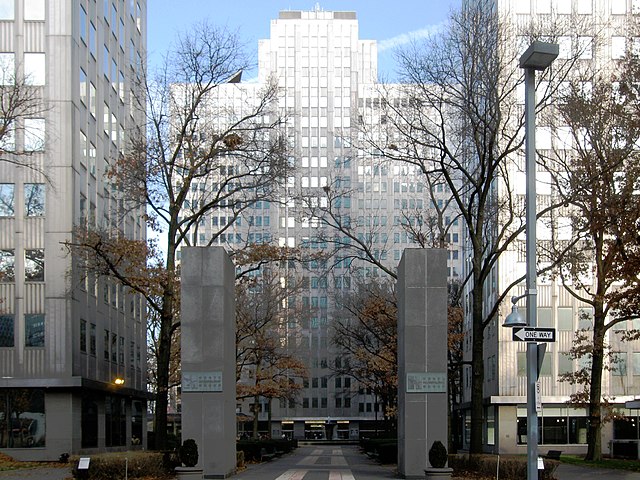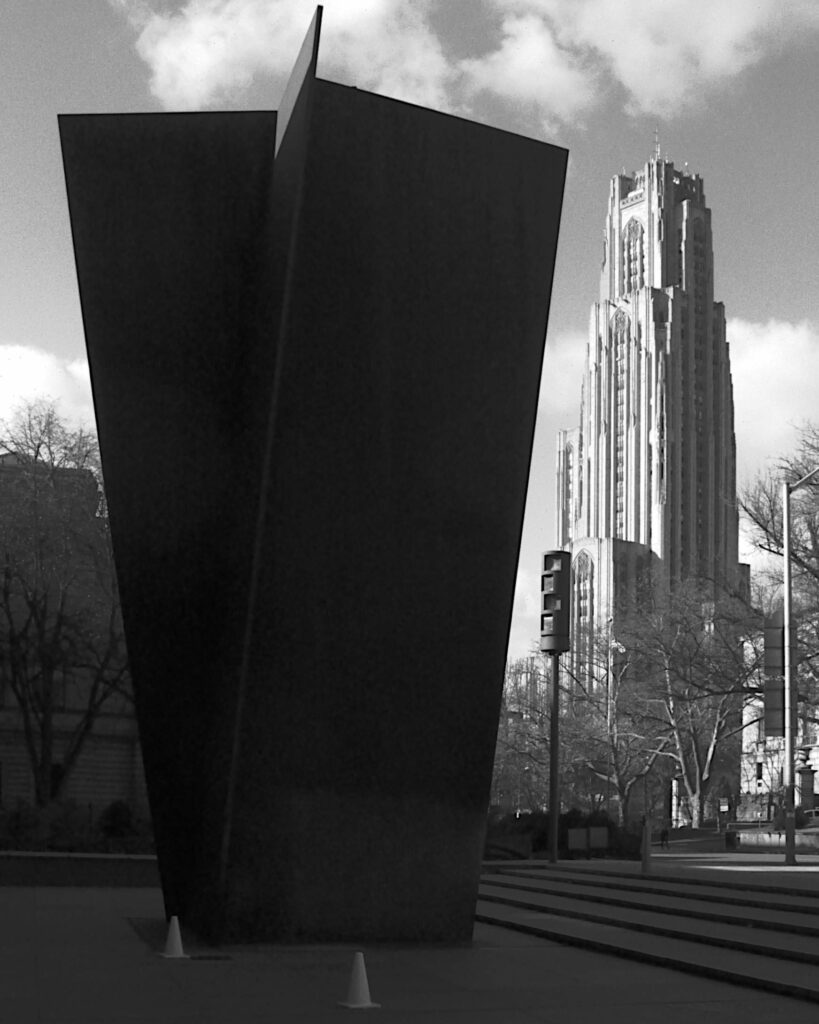
Thousands of drawers like these are in the Carnegie, one of the world’s top natural-history museums. Every once in a while the curators take out a few drawers from the bug collection and display them on the wall near the Grand Staircase.

Thousands of drawers like these are in the Carnegie, one of the world’s top natural-history museums. Every once in a while the curators take out a few drawers from the bug collection and display them on the wall near the Grand Staircase.

This small piece of the old façade sticks up over the undistinguished tiles that cover the rest of this Fifth Avenue building. It must have been quite a façade when we could see the rest of it.

A view of One Gateway Center straight down the plaza, flanked by Two Gateway Center and Three Gateway Center.

If you stand in just the right place, the sculpture outside the Carnegie Museum of Art seems to be almost an exact inversion of the Cathedral of Learning.

The Town Square at the SouthSide Works, decorated for Christmas. The SouthSide Works Cinema is a good imitation of an Art Deco neighborhood movie house, though the Deco entrance leads to a modern multiplex.



The Arrott Building, still under renovation, looms over the shops of Wood Street on a grey but busy December morning.

The Grand Staircase is the heart of the old Carnegie Institute building, and no expense was spared in making it lavishly artistic. The murals are by John White Alexander, a Pittsburgh native who was in his day almost as well regarded as John Singer Sargent.





Looming over the smaller buildings on Fifth Avenue, One PPG Place looks like a fantasy tower in a superhero movie, which is why it tends to play fantasy towers in superhero movies.

Roses of Sharon produce flowers all through the summer and fall, and the flowers each produce a pod of seeds like this. Thus the bush spreads in the city. Its favorite habitat is along fences and among hedges, where the lawn mower won’t get it; in fact, it is very good at taking over entire hedges gradually, until the hedge is nothing but Rose of Sharon. To be fair to the plant, Rose of Sharon makes a very good hedge with very attractive flowers, so you may just want to let it take over.